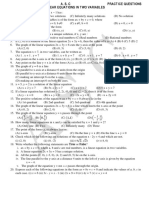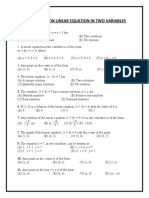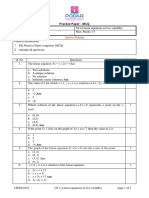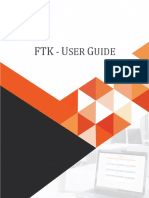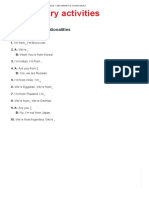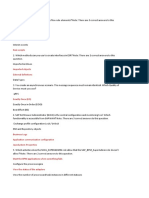0% found this document useful (0 votes)
142 views16 pagesEXTRA QUESTIONS Linear Equations in Two Variables
The document contains multiple-choice questions (MCQs) related to linear equations in two variables, covering topics such as the number of solutions, graph intersections, and forms of equations. Each question is followed by the correct answer and an explanation. The document is divided into three sets (A, B, and C) with various questions exploring the properties and characteristics of linear equations.
Uploaded by
Rudra BhowalCopyright
© © All Rights Reserved
We take content rights seriously. If you suspect this is your content, claim it here.
Available Formats
Download as PDF, TXT or read online on Scribd
0% found this document useful (0 votes)
142 views16 pagesEXTRA QUESTIONS Linear Equations in Two Variables
The document contains multiple-choice questions (MCQs) related to linear equations in two variables, covering topics such as the number of solutions, graph intersections, and forms of equations. Each question is followed by the correct answer and an explanation. The document is divided into three sets (A, B, and C) with various questions exploring the properties and characteristics of linear equations.
Uploaded by
Rudra BhowalCopyright
© © All Rights Reserved
We take content rights seriously. If you suspect this is your content, claim it here.
Available Formats
Download as PDF, TXT or read online on Scribd
/ 16






